Project 4 Future of locomotion museum
Project 4 is the most challenging project in my opinion. It has no specified output format and is an innovative project to create a museum of the future.
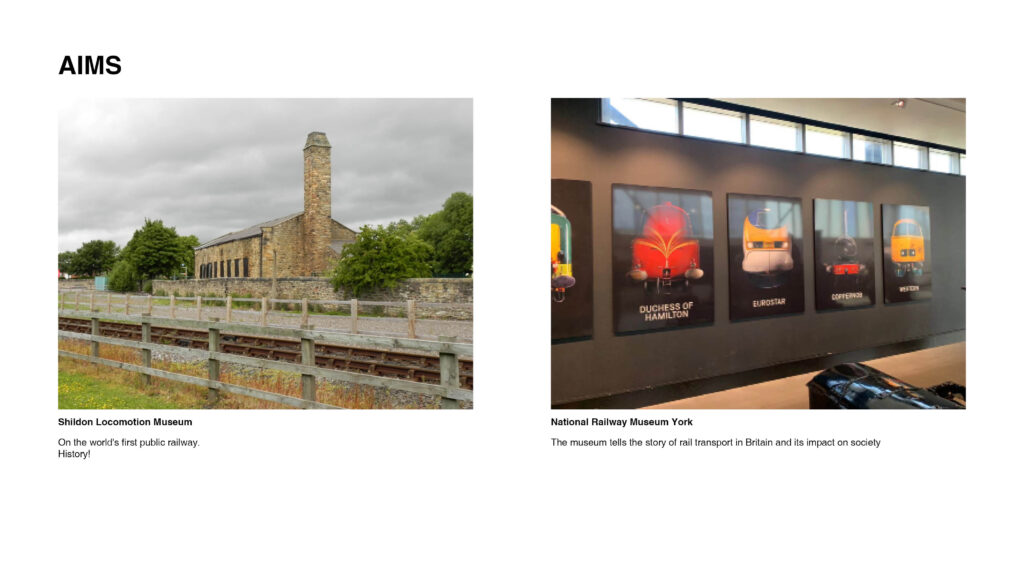
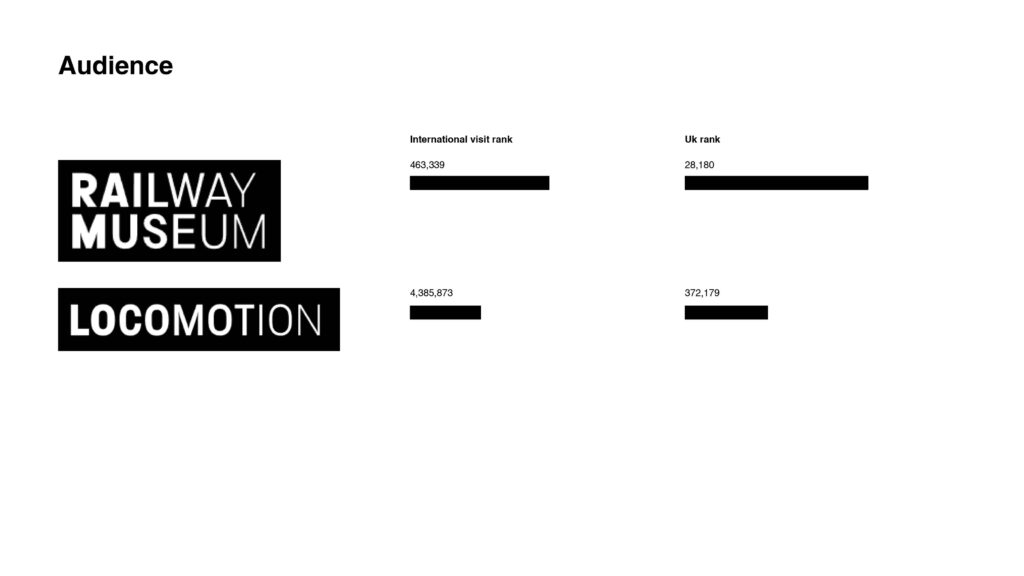
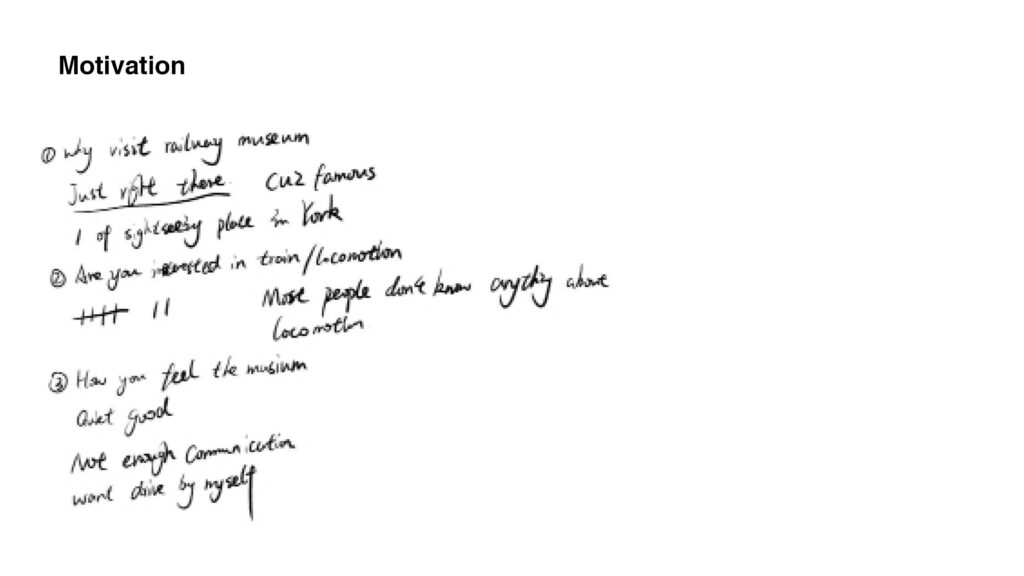
During the holidays, I visited these museums and conducted interviews with audiences. The reasons why these audiences come to the museum vary, but it’s worth noting that a significant portion of the audience is just stopping by and not interested in Locomotion.
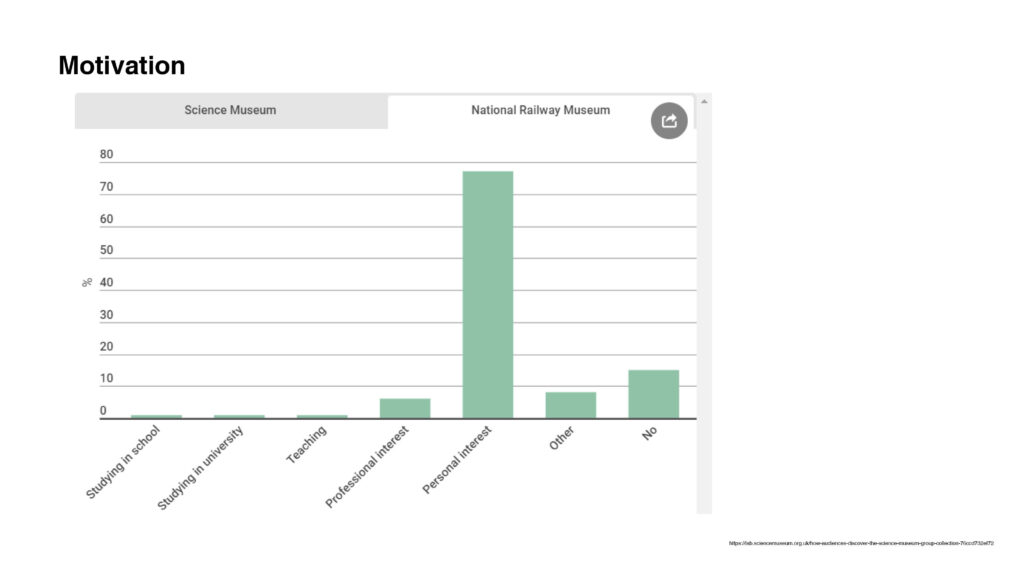
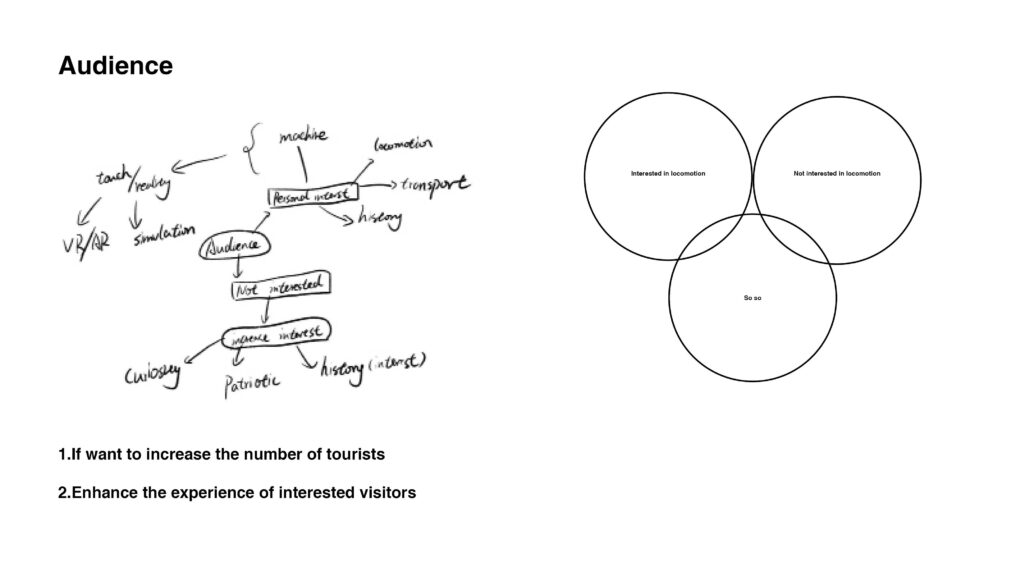
After analysis, I found that most of the audience who watched the exhibition from the Internet had a clear search target, that is to say, online users only browsed and consulted if they were interested in locomotives. From John’s speech, I learned that the current problem encountered by museums is that the space cannot display all the exhibits.
So my target audience is determined to be people who have a high passion for locomotives
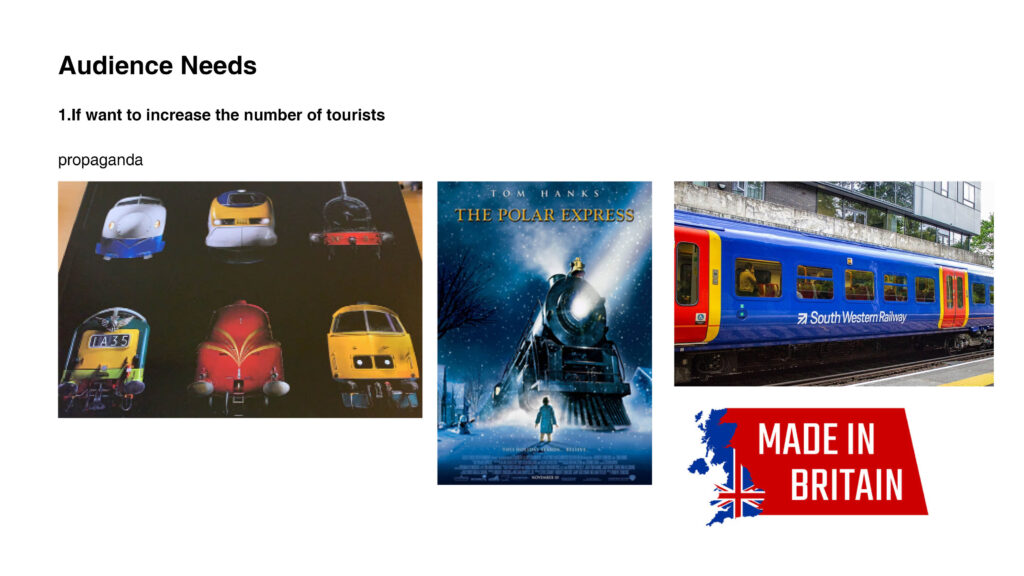
These audiences are divided into several segments, starting with people who are interested in trains.
This type of audience does not have the desire to explore some in-depth knowledge, but is just curious or has learned about locomotives from other channels, and wants to visit. For this part of the audience, my proposal is to use publicity methods to stimulate more interest, such as peripheral works. .
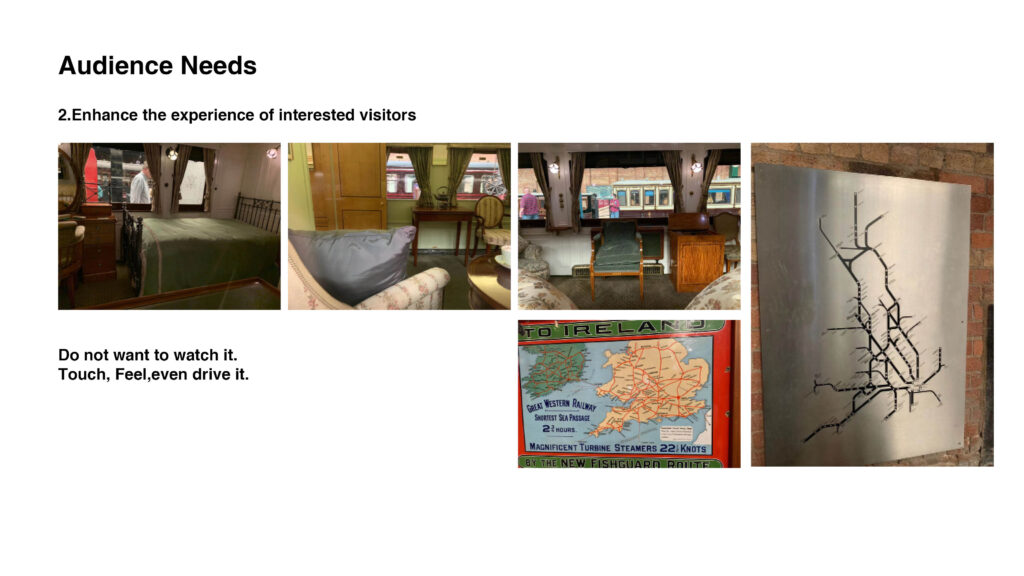
The other part is an audience with a lot of interest in transportation related, enjoying the process of locomotives running. I’m also a huge Locomotives fan.
From my personal point of view, the experience of viewing the exhibition is not very good. I do not mean that the exhibition itself is not good enough, but that it cannot meet my personal experience needs. From a personal point of view, I prefer to experience the locomotive from a multi-sensory point of view.

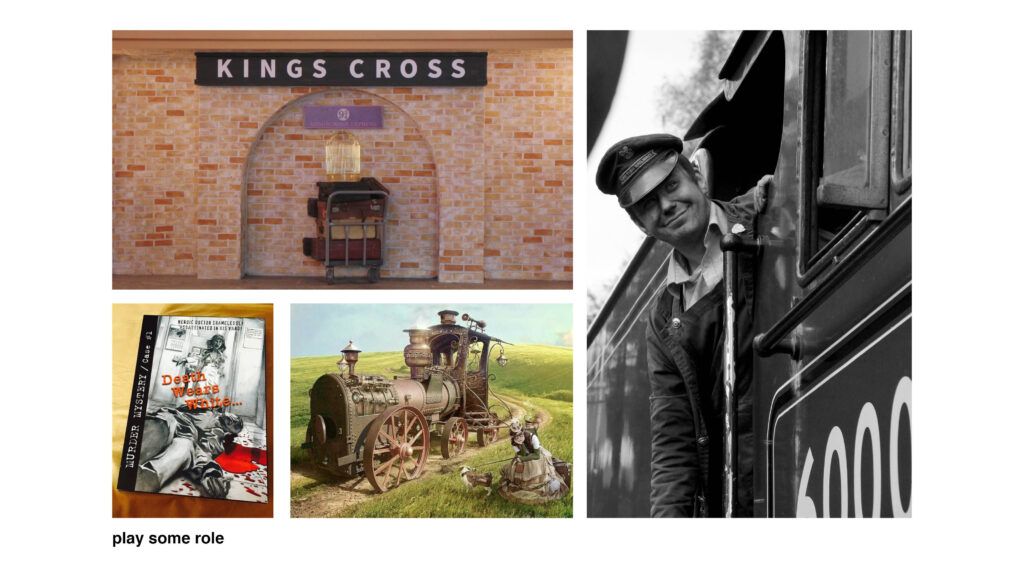
For this part of the audience, I propose other different solutions. As shown in the figure, if the exhibition hall of locomotives can have a driving simulation experience facility like the Ferrari amusement park in Dubai, it can well meet the emotional needs of this part of the audience.
Another part of the audience interested in the history of trains can create some kind of immersive script, allowing the audience to experience the history of the steam age immersively.
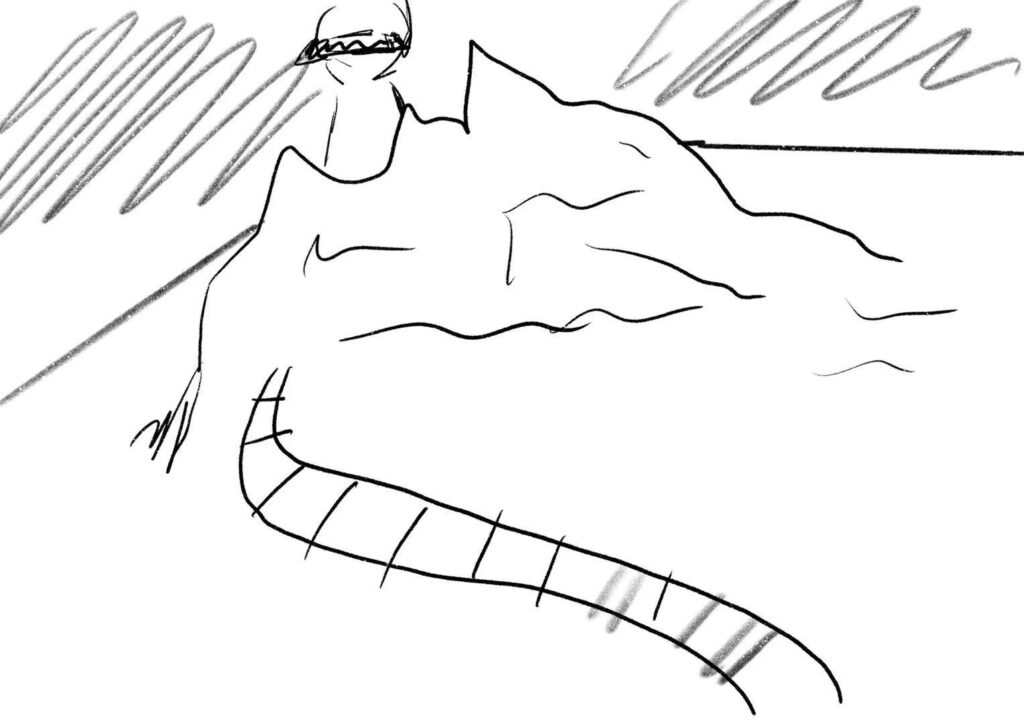
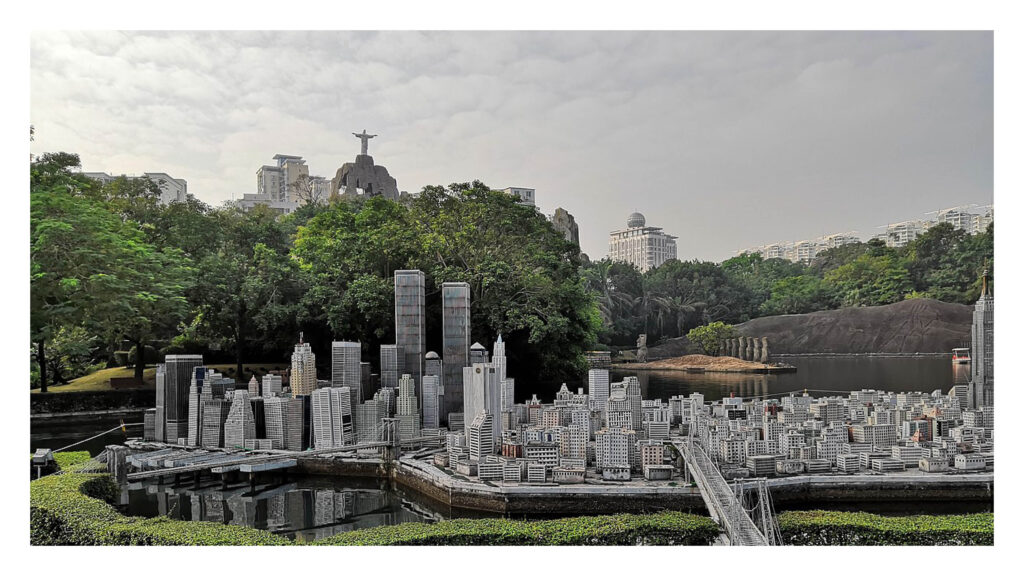
This inspiration comes from an exhibition park I have been to. This is not a single exhibition hall, but a park composed of historical sites from all over the world. Like the one pictured here, there’s an oversized sandbox with a miniature version of New York City on it.
After all, who can resist seeing the world work from God’s perspective?
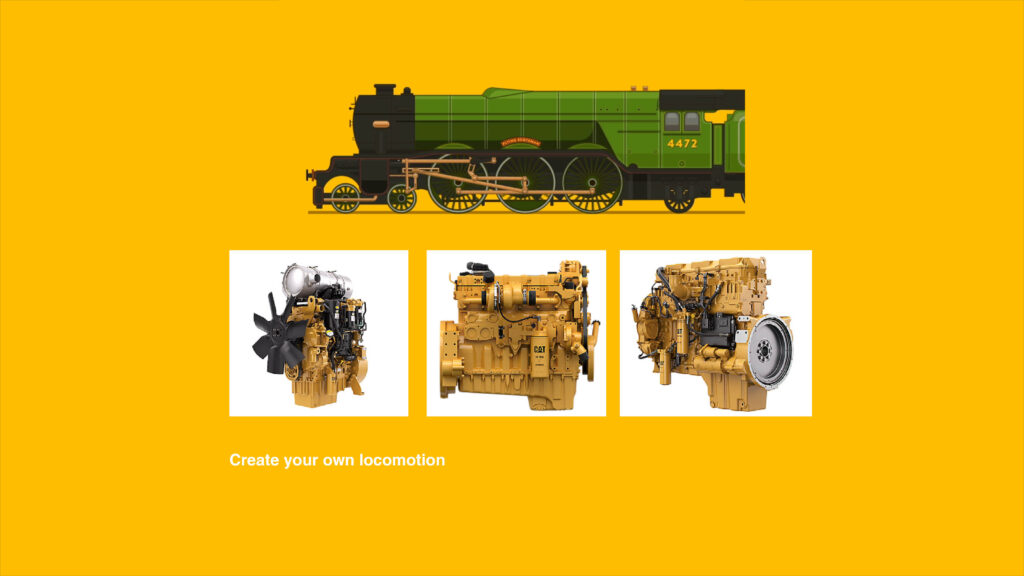
From a unique piece for certain audiences, assembling a Locomotion just to yourself can be quite charming.

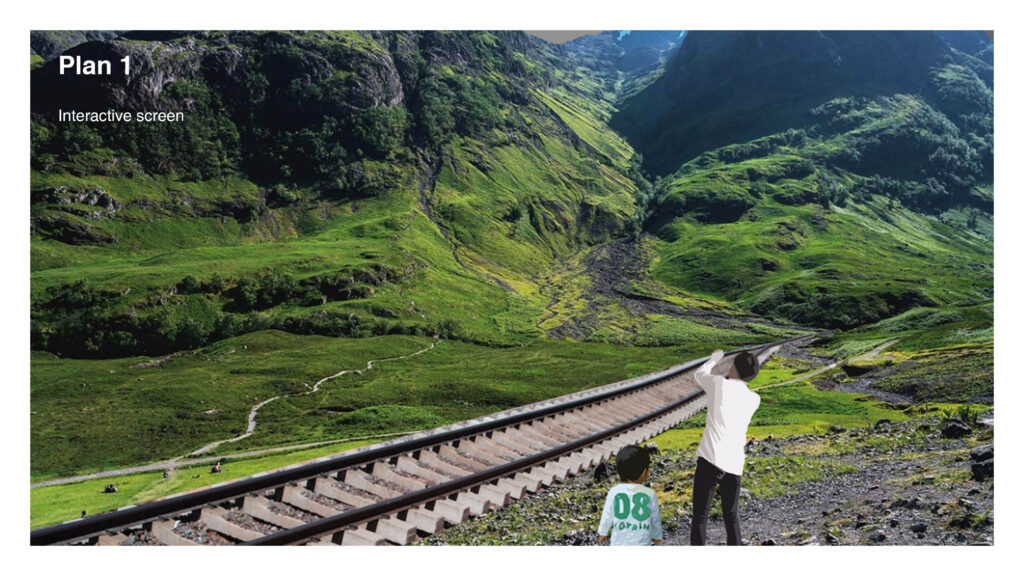
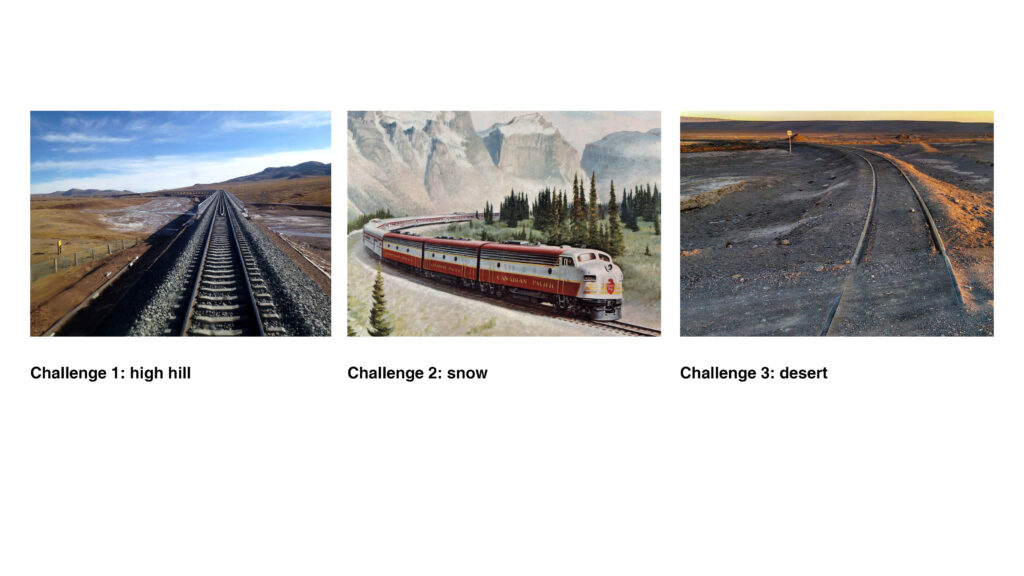
For improving the experience, an interactive screen is a good choice.
Different landscapes and scenes will be presented on the interactive screen. What the audience needs is to challenge on these different landscapes, create a unique and operational railway route, and choose their favorite locomotive to challenge.
In this way, in the process of choosing locomotives, the audience will be interested in different types of trains, and even have a preliminary understanding. And there is no need to worry about the space problem. All the exhibits are displayed on the digital side, which increases the audience’s sense of participation.
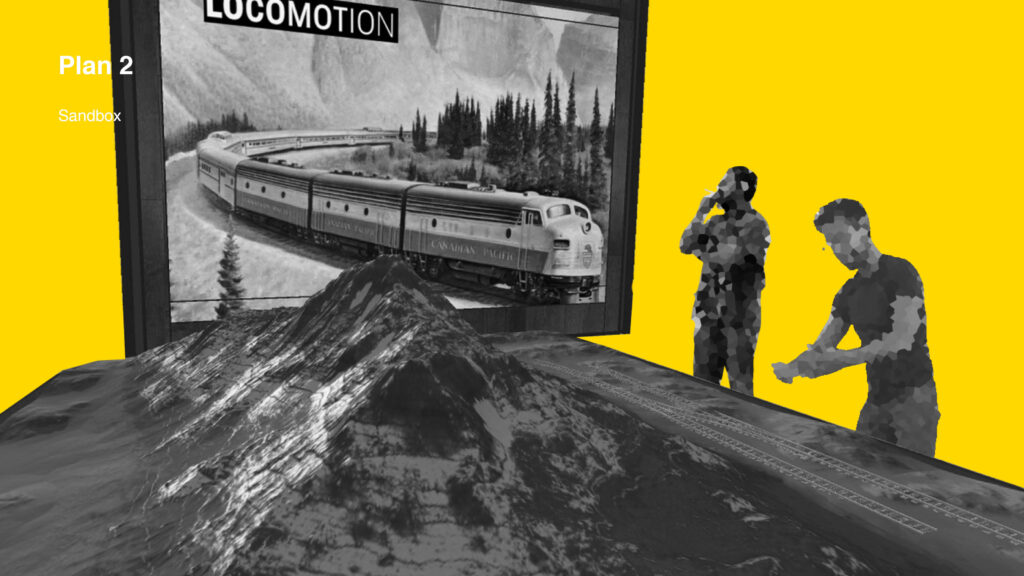
A similar thing is to use a physical sandbox to allow audiences to create.
From this perspective, it only takes a small studio to solve operational problems. The degree of freedom of the audience is greatly improved. Instead of just watching locomotives, they can touch and even experience the process of trains running in different regions as a manager, and even as a planner, experience what locomotives may encounter in the process of using difficulty. Learn about the great history of locomotives.
As seen in the V&A museum, I kept wondering why the light alone impresses me so much. I think audience engagement and interactivity is very important.
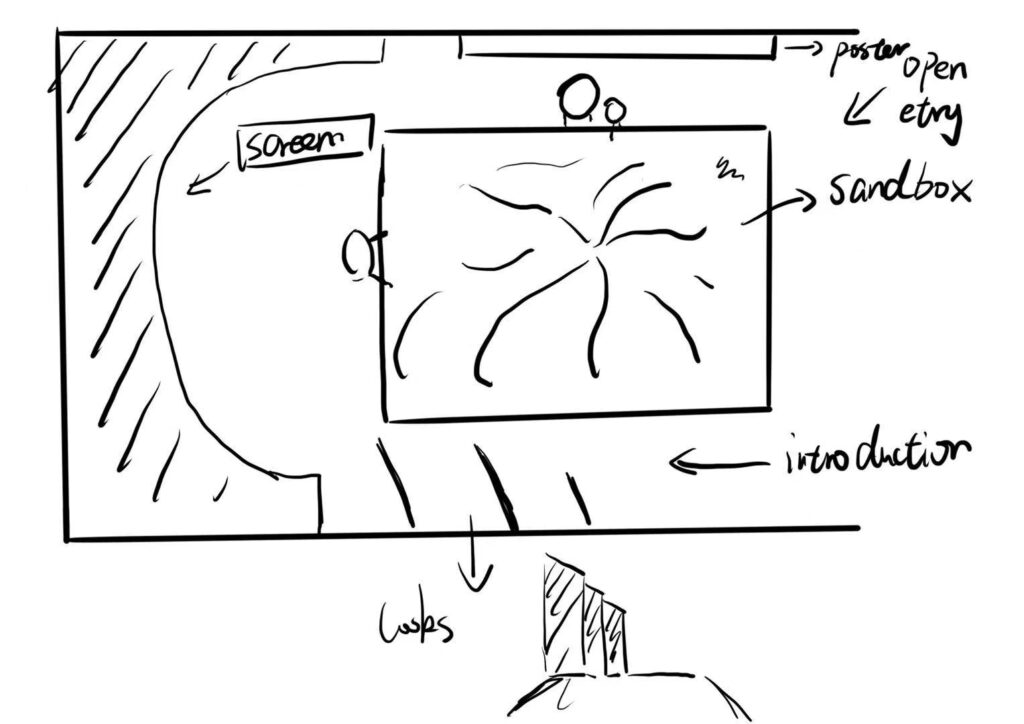
In the end, I decided to start with a sandbox studio. The advantage is that it can increase the audience’s sense of participation, and the second is that it can solve the problem of space and maintenance costs.
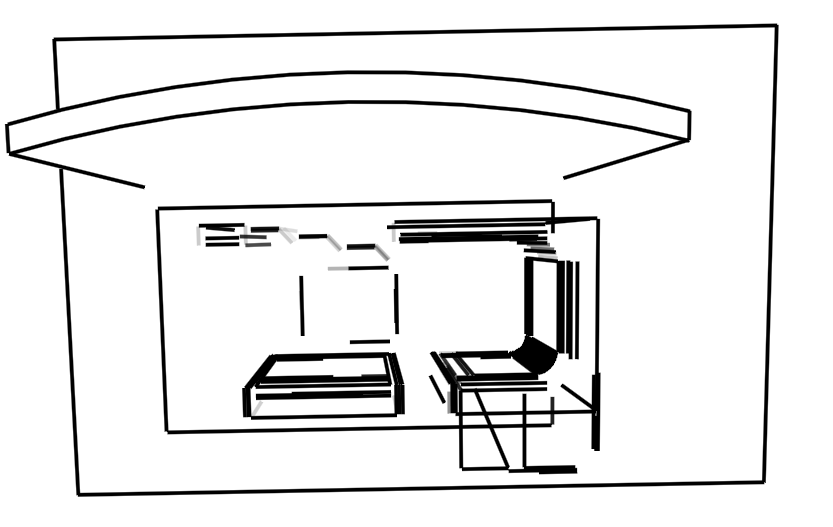
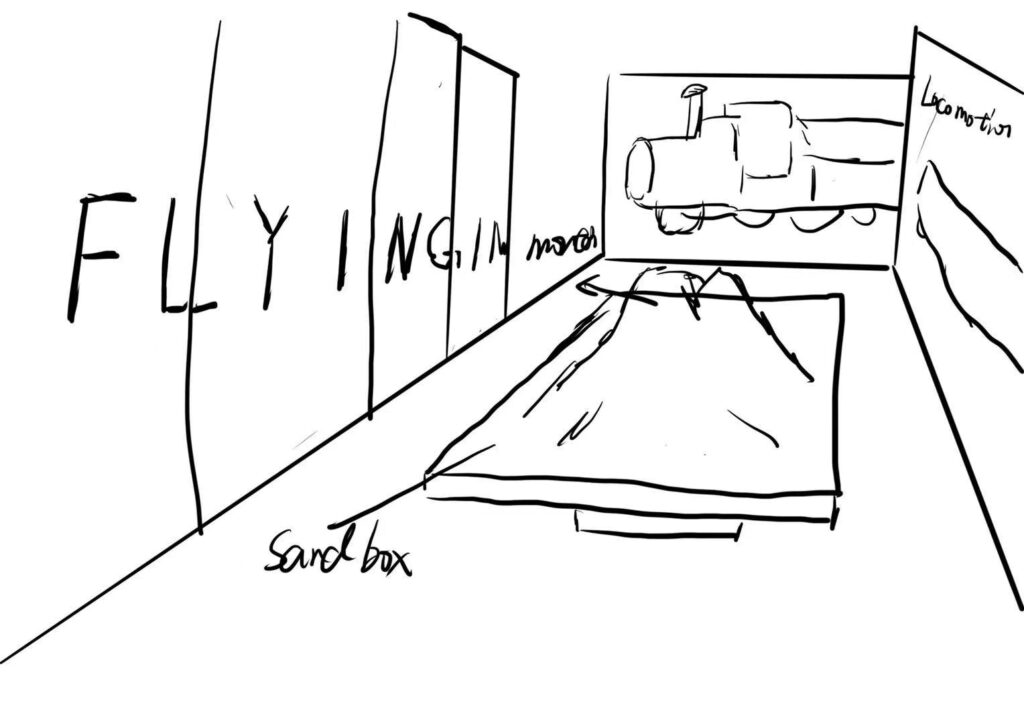
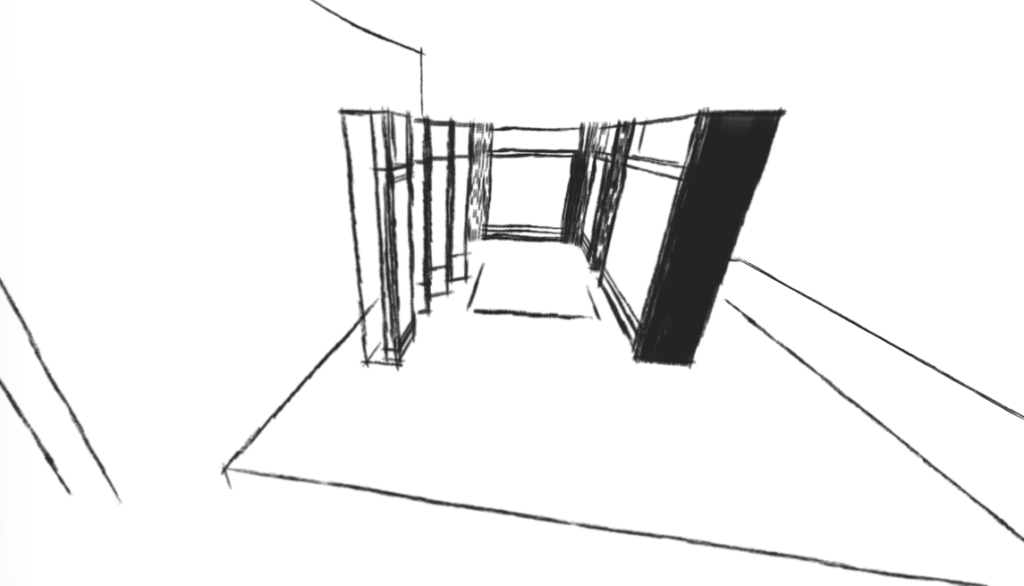
Finally, based on the previous decision and the analysis results, I am going to use Sketch up to realize the idea. There are great difficulties in the process of implementation, because I have not been exposed to the design of space before, and I have not learned Sketch up, so it is difficult to get started.
Process
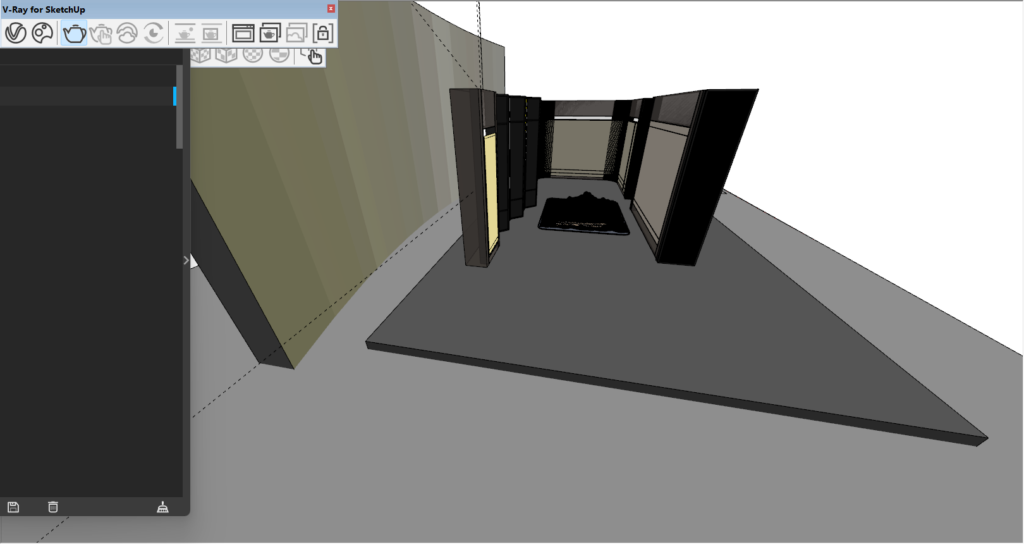
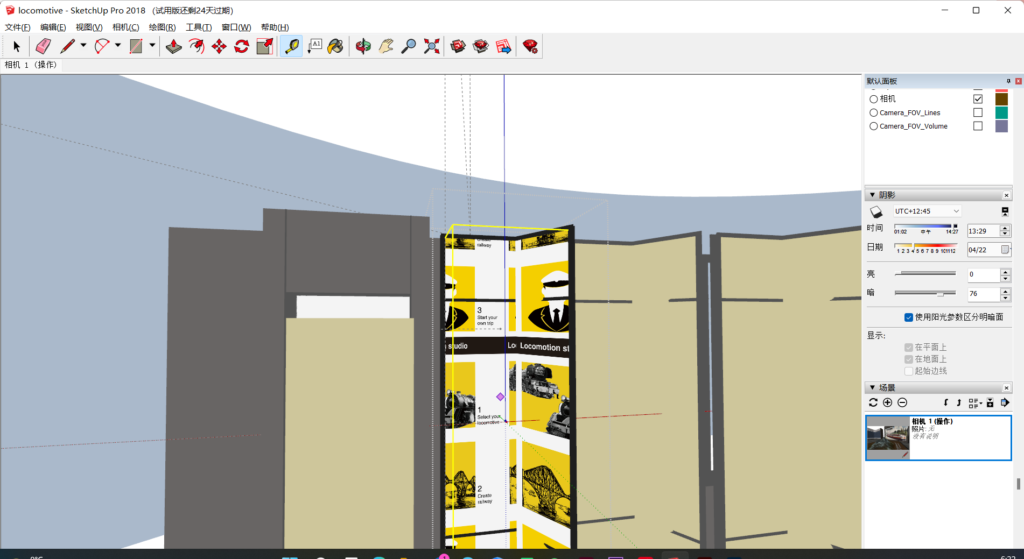
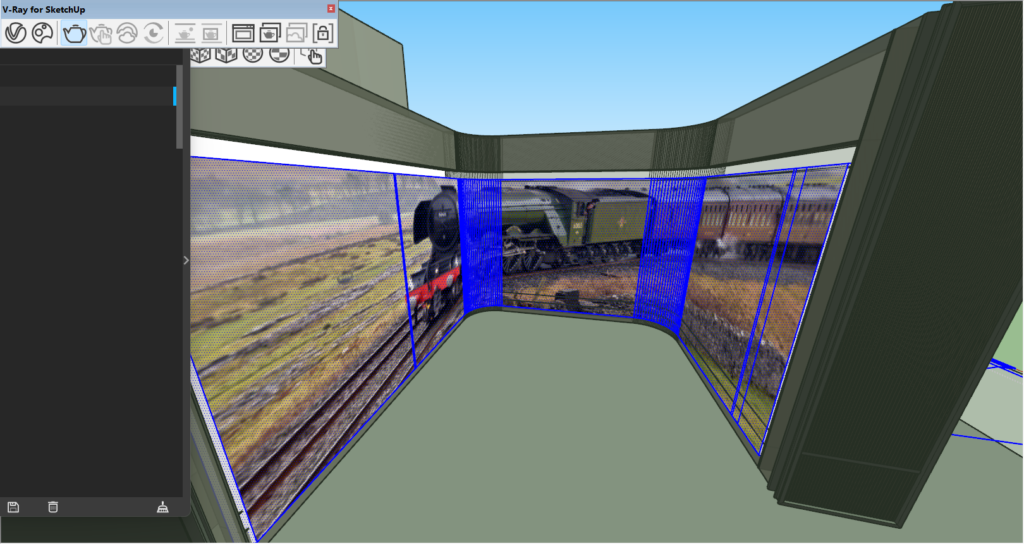
Final Sketchup Model
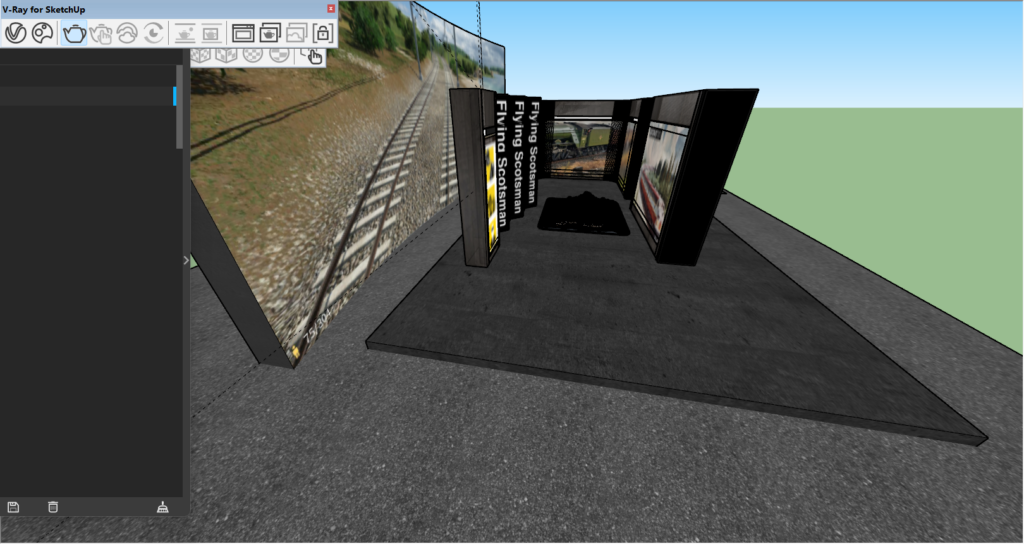
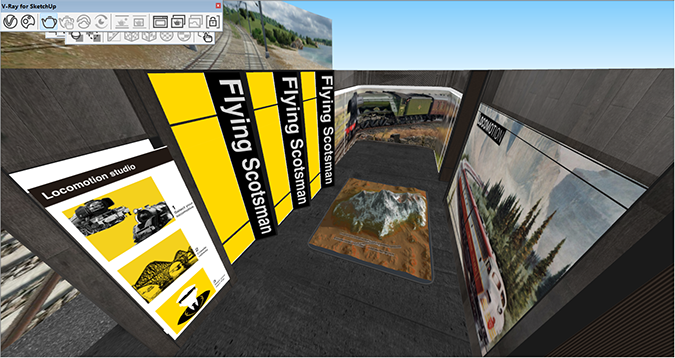
Outcomes
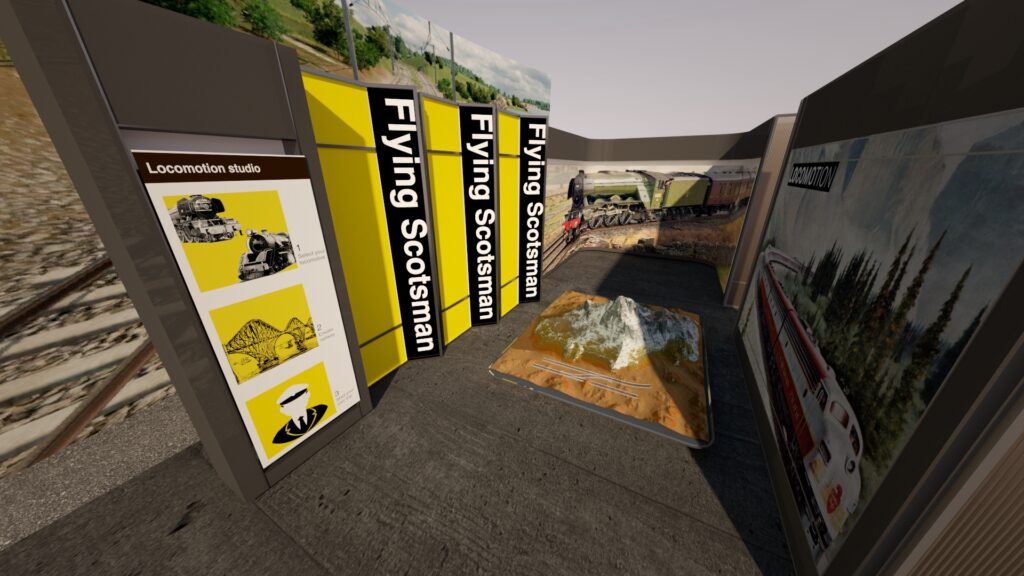
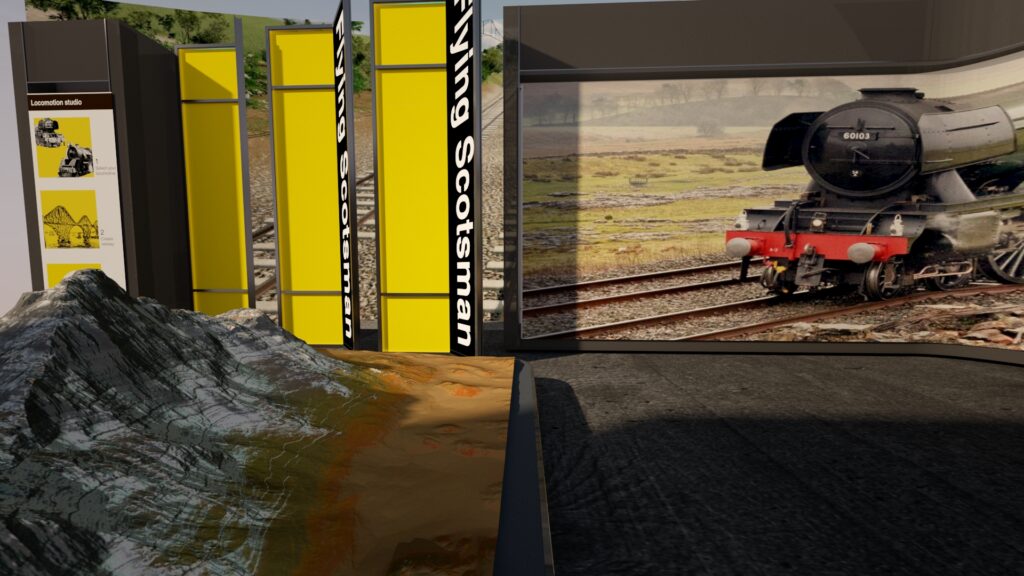
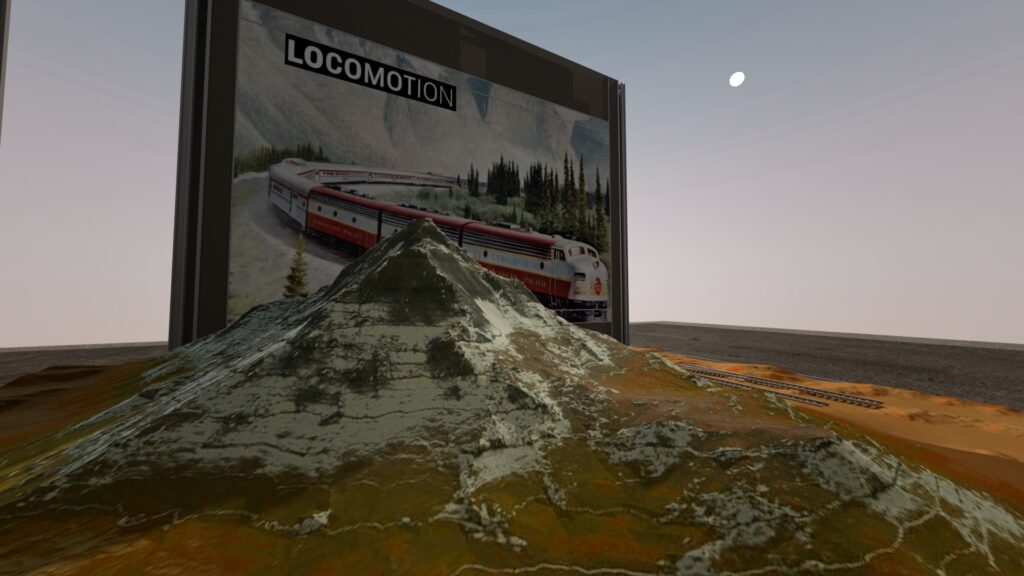
May 23, 2022
